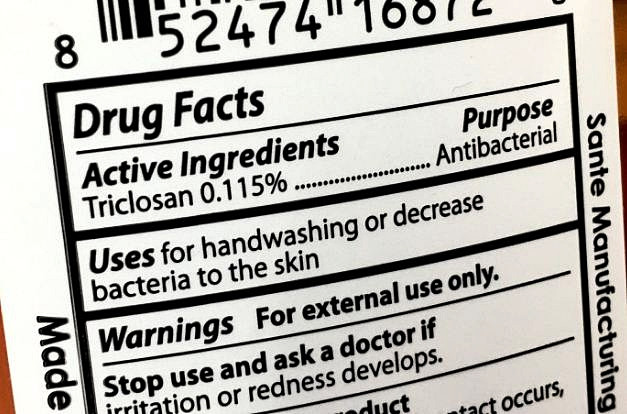Triclosan, an antibacterial and antifungal agent regulated as a pesticide by the U.S. Environmental Protection Agency (EPA) and as a drug by U.S. Federal Drug Administration (FDA), has once again been linked to fostering antibiotic resistance among bacteria that can kill people.
Better known as an ingredient in toothpaste, Triclosan or TCS seems to make bacteria stronger and more capable of surviving antibiotic treatment, according to a study from Washington University in St. Louis, which is available in the online journal, Antimicrobial Agents & Chemotherapy.
Triclosan, which has been used in consumer products for over 40 years, is a popular antibacterial and antifungal agent in the U.S. It's added to toothpaste, mouthwash and cosmetics, It's even used in clothing, baby toys and credit cards to allegedly reduce or prevent bacterial growth.
Contrary to this popularly held belief, the study suggests triclosan exposure may inadvertently drive bacteria into a state in which they're better able to tolerate normally lethal concentrations of antibiotics.
The new study, which involed testing triclosan in mice, uncovered the extent to which triclosan exposure limits the body's ability to respond to antibiotic treatment for urinary tract infection (UTI). It also sheds new light on the cellular mechanism that allows triclosan to interfere with antibiotic treatment.
Researchers led by Petra Levin, a professor of biology in Arts & Sciences at Washington University, were particularly interested in bactericidal antibiotics, or antibiotics that can kill bacterial cells and are typically prescribed by doctors to treat bacterial infections. They wanted to know if triclosan could protect bacteria from death in the presence of bacteria-killing antibiotics.
Bacterial cells were treated with bactericidal antibiotics and researchers tracked the ability of bacteris to survive over time. In one group, the bacteria were exposed to triclosan prior to being given the bactericidal antibiotic. In the other group, they were not.
"Triclosan increased the number of surviving bacterial cells substantially," said Levin.
She said that normally, one in a million cells survive antibiotics, and a functioning immune system can control them. "But triclosan was shifting the number of cells. Instead of only one in a million bacteria surviving, one in 10 organisms survived after 20 hours. Now, the immune system is overwhelmed."
Triclosan exposure allowed the bacteria to escape death by antibiotics. And the protective property was not limited to any single family of antibiotics. In fact, multiple antibiotics considered unique in how they kill cells were less effective at killing bacteria exposed to triclosan.
The study showed Triclosan increased tolerance to a wide breadth of antibiotics.
UTIs are common and so is exposure to triclosan. An astounding 75 percent of adults in the United States have detectable levels of triclosan in their urine. About 10 percent of adults have levels high enough to prevent the E. coli bacteria from growing.






